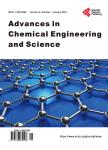Sequential Ordering Algorithm for Mass Integration: The Case of Direct Recycling
Sequential Ordering Algorithm for Mass Integration: The Case of Direct Recycling作者机构:Department of Chemistry and Applied Biosciences Swiss Federal Institute of Technology Zurich Switzerland Department of Energy and Environment Chalmers University of Technology Gothenburg Sweden
出 版 物:《Advances in Chemical Engineering and Science》 (化学工程与科学期刊(英文))
年 卷 期:2016年第6卷第2期
页 面:158-182页
学科分类:07[理学] 0701[理学-数学] 070101[理学-基础数学]
主 题:Process Integration Preemptive Goal Programming Conditional Optimality Recycling Activities Prioritization Linear Programming
摘 要:In the last three decades much effort has been devoted in process integration as a way to improve economic and environmental performance of chemical processes. Although the established frameworks have undergone constant refinement toward formulating and solving complicated process integration problems, less attention has been drawn to the problem of sequential applications of mass integration. This work addresses this problem by proposing an algorithm for optimal ordering of the process sinks in direct recycling problems, which is compatible with the typical mass integration formulation. The order consists in selecting the optimal sink at a specific integration step given the selection of the previous steps and the remaining process sources. Such order is identified through a succession of preemptive goal programming problems, namely of optimization problems characterized by more objectives at different priority levels. Indeed, the target for each sink is obtained by maximizing the total flow recycled from the available process sources to this sink and then minimizing the use of pure sources, starting from the purest one;the hierarchy is respected through a succession of linear optimization problems with a single objective function. While the conditional optimality of the algorithm holds always, a thorough statistical analysis including structured to random scenarios of process sources and process sinks shows how frequently the sequential ordering algorithm is outperformed with respect to the total recycled amount by a different selection of process sinks with the same cardinality. Two more case studies proving the usefulness of ordering the process sinks are illustrated. Extensions of the algorithm are also identified to cover more aspects of the process integration framework.



